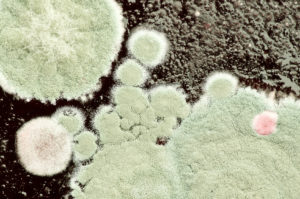Fungus Among Us – Part II
 In Part I of our article about fungus we spoke a lot about fungus contained in our food. In today’s edition we will look at external, non-food sources, of fungal exposure.
In Part I of our article about fungus we spoke a lot about fungus contained in our food. In today’s edition we will look at external, non-food sources, of fungal exposure.
Of course, first thing that comes to mind is mold growing in our homes. Ever had a water leak? Overflowing toilet, washing machine or dishwasher? You did not think it was a big flood, but even minor leaks can cause mold to start growing in your home when it goes untreated, especially if you live in a moist, warm climate like we do here in Texas. A common place for mold to grow is also invisible behind our walls. You may never know that it is there until you or your family start experiencing symptoms, like respiratory ailments, fatigue, etc. that will not, or only temporarily, resolve.
So how do you know if it could be fungus? Luckily, there is a lot more awareness of the problem and there are companies that specialize in the detection and decontamination of fungus in our homes. It depends on how much money and time you want to spend, whether you go the DIY route (home improvements centers offer mold test kits) or use an environmental consultant in your area. Just do your research online to check on the option that is most suitable for you.
Another place where mold exposure is quite common is in our workplaces and for the exact same reasons as our homes become contaminated with mold. So, if you and your fellow employees suffer from constant, unexplained respiratory ailments, take a look at your work space and see if there might be an issue.
And remember, once your environment is decontaminated, your body needs to be treated for mold as well. Many alternative healthcare practitioners are familiar with this and, if it is a severe infection, you may need an anti-fungal prescription from your medical doctor.